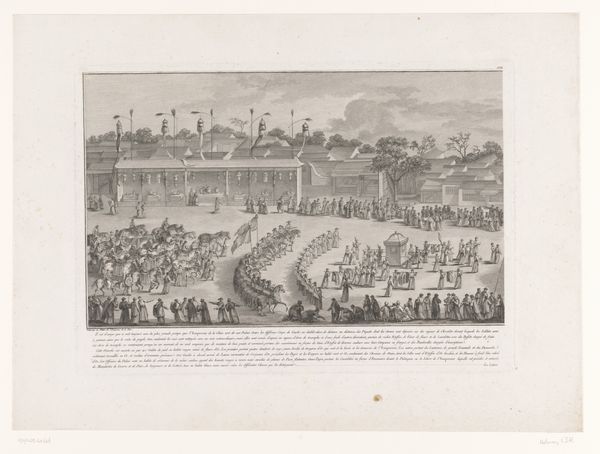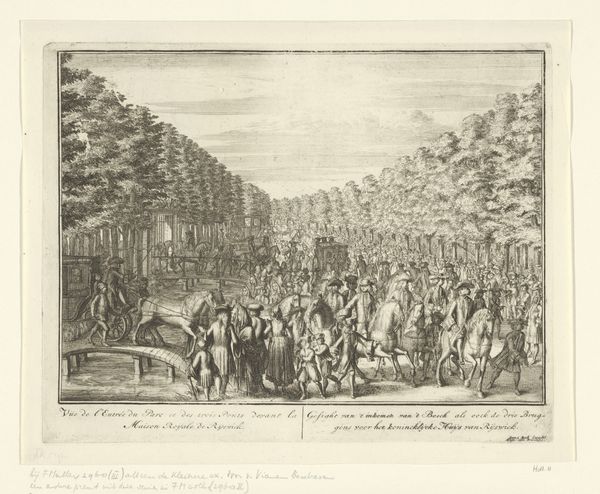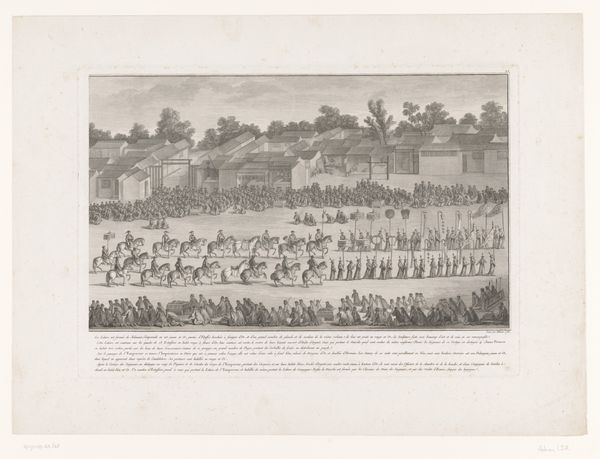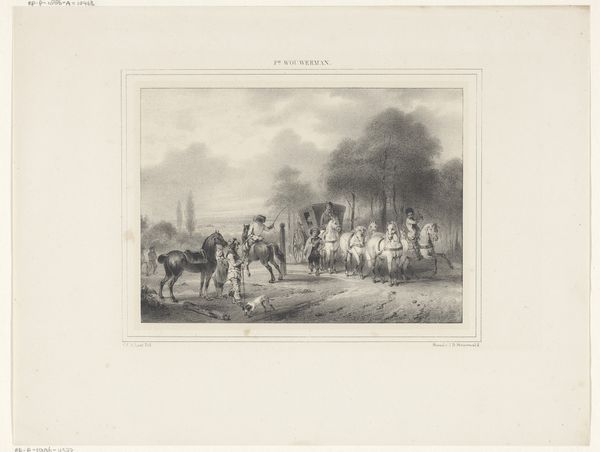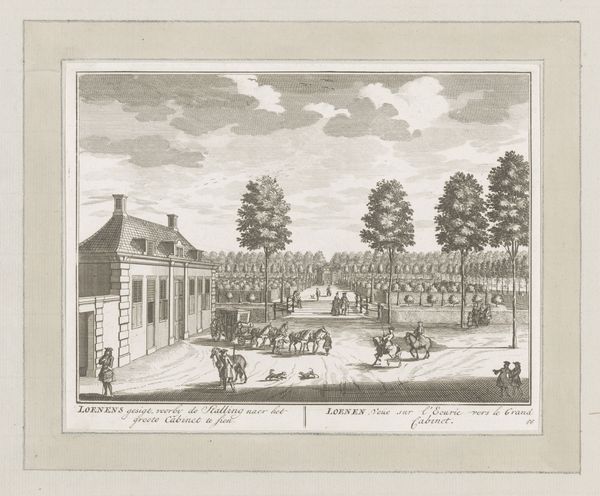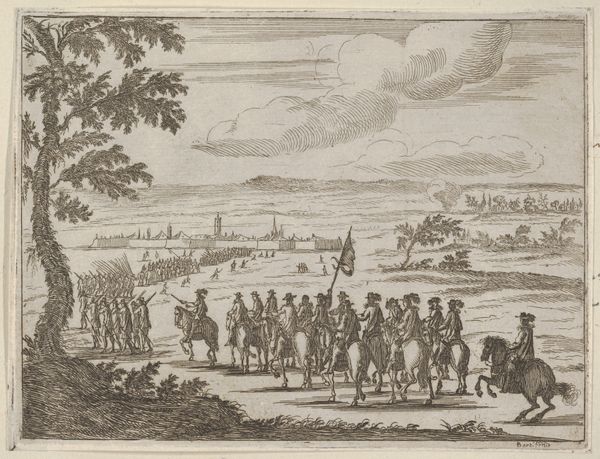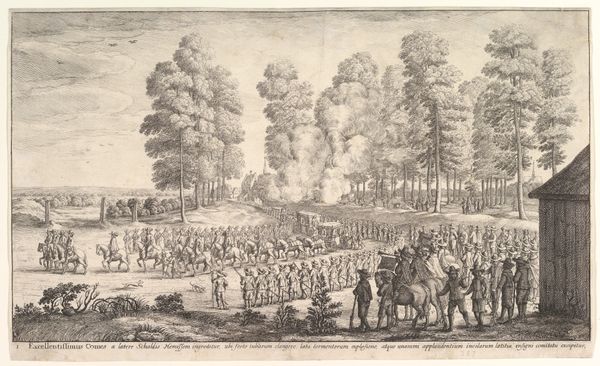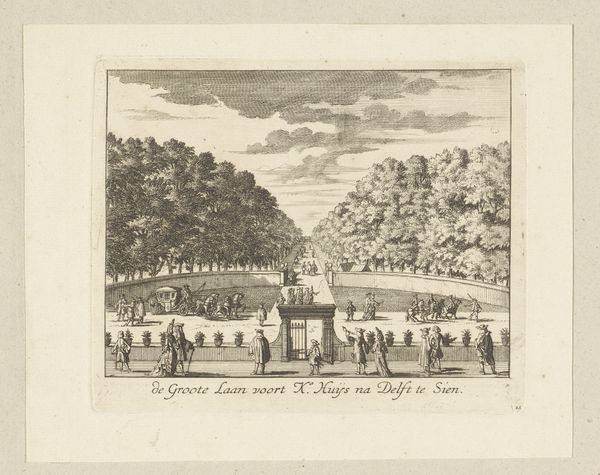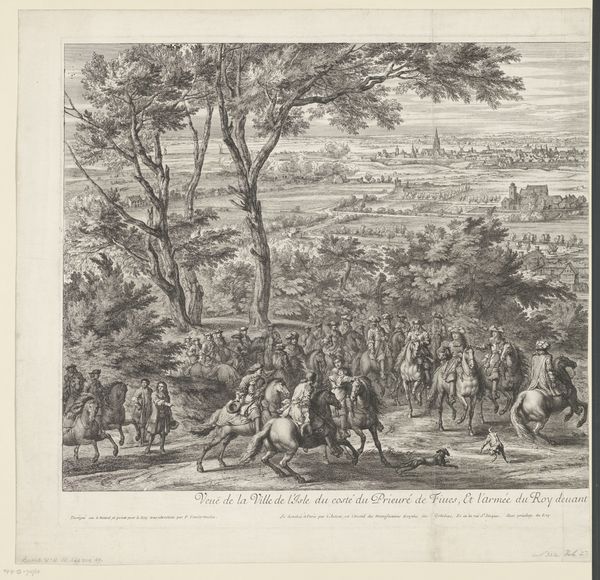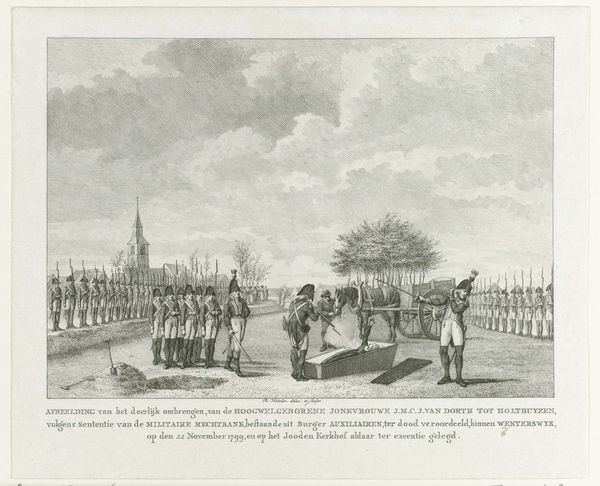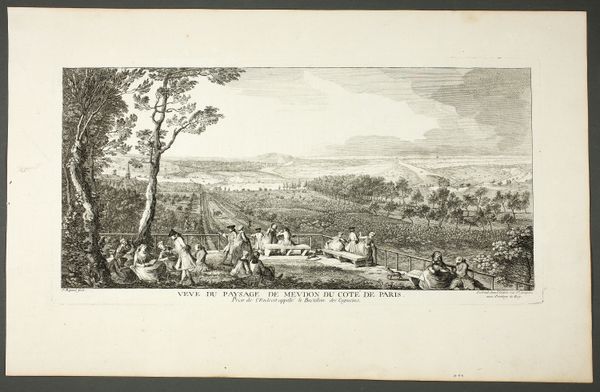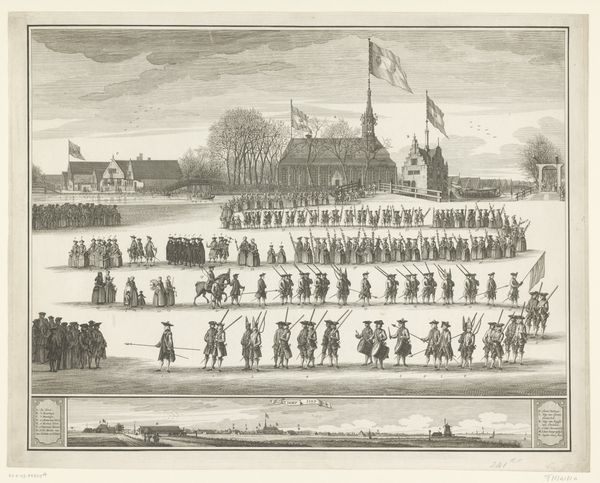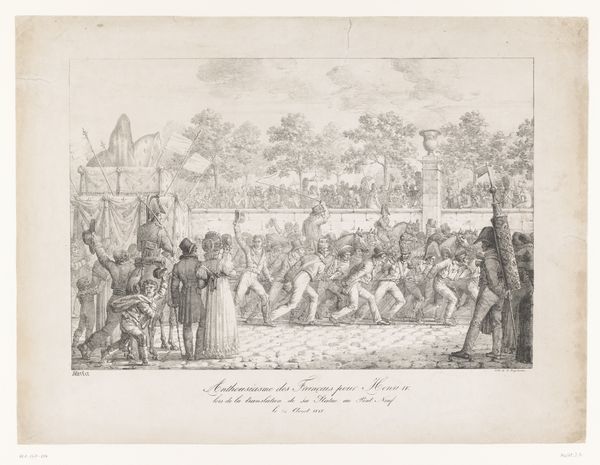
print, paper, engraving
#
narrative-art
# print
#
asian-art
#
landscape
#
paper
#
history-painting
#
engraving
Dimensions: height 305 mm, width 435 mm
Copyright: Rijks Museum: Open Domain
Curator: Here we have 'Ploeg-ceremonie' voor keizer Qianlong, or 'Plowing Ceremony for Emperor Qianlong', an engraving by Isidore-Stanislas Helman, created in 1786. Editor: It looks incredibly ordered. A vast procession is precisely arranged, yet the overall impression is one of… well, almost sterile formality. There's such detail rendered with such delicate line work. Curator: It does exude formality. The subject is an annual ritual meant to symbolize the Emperor's connection to agriculture and ensure a bountiful harvest. Think of the plow, an ancient and universal image of sustenance. Editor: And how this one is elevated into a state affair, literally and symbolically placing the Emperor at the nexus of power and provision. Who’s included, who’s excluded. That long line speaks volumes, really. What can we glean from it all? Curator: For me, it represents a deeply rooted desire for continuity. This isn't just about agriculture; it is about the Mandate of Heaven. The act is intended to secure a lasting dynasty through earthly symbols of abundance and hard work. Editor: A propaganda piece then. A statement, made for who exactly? Because with the vantage point offered, it looks more staged than functional, this very rigid layout only drives the point even harder. Curator: Yes, it functioned on multiple levels. Certainly, it was meant to legitimize the Emperor’s reign for those within the empire, to demonstrate his active role in securing their wellbeing. Editor: I'm drawn to the precision of the lines. It speaks to a meticulous rendering of power and the effort required to keep the order, as you call it. Every figure is rendered with clear attention to detail, yet appears strangely uniform. It feels like control, codified on paper. Curator: Yes, that control extended to every facet of the artwork, reflecting how the Emperor desired his image to be disseminated: orderly, powerful, and benevolently engaged with his people's prosperity. Thanks for pointing this. Editor: The symbolic weight really lands, given the attention to the technique here. So much so, that it speaks beyond its moment in time. The narrative is, well, powerful. Curator: I see this as a way of visually codifying dynastic power in the age of Enlightenment thought. Editor: Agreed. A clear demonstration.
Comments
No comments
Be the first to comment and join the conversation on the ultimate creative platform.
